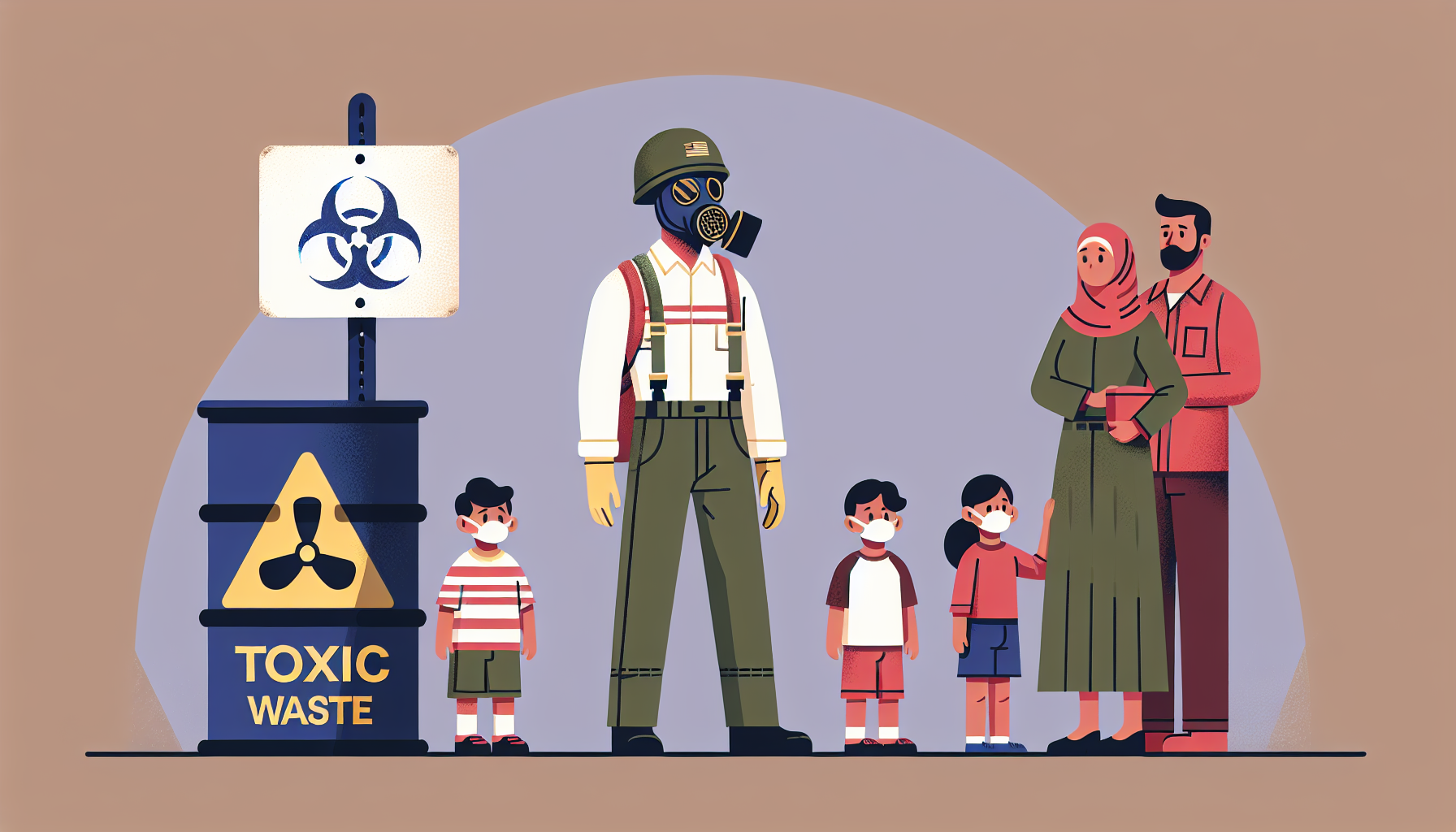Definition
The Environmental Hazards Guidelines is a term associated with the U.S. Department of Veterans Affairs (VA), referring to the set of criteria and protocols designed to protect veterans from harmful environmental factors. These guidelines identify the specific hazards, such as exposure to toxic chemicals or contaminants that veterans may have encountered during their military service. They also outline the process for evaluating and establishing service connections for disabilities related to those exposures, ensuring proper care and support for affected veterans.
Key Takeaways
- Environmental Hazards Guidelines are a set of criteria established by the Department of Veterans Affairs (VA) to help identify and assess potential health risks and related benefits for veterans exposed to specific environmental hazards during their military service.
- The guidelines cover numerous environmental hazards, such as contaminated water, chemical and biological warfare agents, ionizing radiation, and airborne hazards like asbestos and burn pits, ensuring that veterans affected by these exposures receive necessary medical care and disability compensation.
- The VA continuously updates the Environmental Hazards Guidelines based on new evidence and research findings, improving the understanding and recognition of various health conditions and diseases related to environmental exposure while ensuring appropriate assistance and benefits for eligible veterans.
Importance
The Environmental Hazards Guidelines are important in the context of VA benefits because they provide a framework for evaluating and addressing the health risks and potential disabilities faced by veterans as a result of exposure to environmental hazards during their military service.
These guidelines help the Department of Veterans Affairs identify, assess, and provide necessary support and compensation to veterans who have been affected by toxic and harmful substances in the environment, such as asbestos, contaminated water, or chemical exposure.
By defining criteria and outlining assessment processes, the Environmental Hazards Guidelines play a crucial role in ensuring the fair and thorough evaluation of claims related to environmental hazards, thus safeguarding the well-being and rights of veterans who have sacrificed and served their country.
Explanation
The Environmental Hazards Guidelines serve a crucial purpose within the realm of VA benefits as they aim to protect and support veterans who have been exposed to hazardous environmental factors during their military service. These guidelines establish a framework that ensures comprehensive evaluation, assessment, and documentation of a veteran’s potential exposure to environmental hazards, such as toxic substances, radiation, and chemical or biological contaminants.
By identifying the health risks associated with these harmful exposures, the Department of Veterans Affairs (VA) can effectively provide proper medical assessment, care, disability compensation, and other valuable benefits to veterans affected by these environmental factors. The utilization of Environmental Hazards Guidelines is crucial in enabling the VA to address the multitude of health complications that might arise due to hazardous exposure during military service.
By following these guidelines, the VA can conduct thorough investigations, develop presumptive service connection policies, and allocate resources and medical services to veterans in need. In addition, the guidelines aid in increasing awareness, understanding, and support for veterans affected by environmental hazards.
Through this comprehensive approach, the VA remains committed to providing the necessary resources, aid and assistance that our nation’s veterans have earned by serving their country.
Examples of Environmental Hazards Guidelines
The Environmental Hazards Guidelines within the VA Benefits term refers to the criteria and regulations related to service-related exposure to hazardous substances, resulting in potential health issues for veterans. The Department of Veterans Affairs (VA) recognizes these exposures and may provide benefits and health care for those affected. Here are three real-world examples:
Agent Orange Exposure Guidelines:Agent Orange is a defoliant chemical that was used by the U.S. military during the Vietnam War to clear dense jungle foliage. Veterans who served in Vietnam between January 9, 1962, and May 7, 1975, and were exposed to Agent Orange may be eligible for compensation and healthcare benefits. The VA has established a list of presumptive diseases linked to exposure, streamlining the claims process for affected veterans. Agent Orange guidelines detail eligibility criteria, areas of exposure, and specific diseases that qualify for VA benefits.
Gulf War Syndrome Guidelines:Gulf War Syndrome, also known as Chronic Multisymptom Illness (CMI), refers to a variety of unexplained chronic symptoms suffered by veterans of the 1990-1991 Gulf War. Exposure to various environmental hazards such as pesticides, smoke from burning oil wells, depleted uranium, or chemical warfare agents may have contributed to these health issues. The VA has set up guidelines for Gulf War Syndrome, providing medical evaluation and benefits for veterans suffering from CMI, including a list of qualifying undiagnosed illnesses.
Camp Lejeune Water Contamination Guidelines:Between 1957 and 1987, the water supply at Camp Lejeune, a military base in North Carolina, was contaminated with industrial solvents, benzene, and other chemicals. Veterans and family members who lived on the base for at least 30 days during this period and suffer from certain illnesses (including leukemia, kidney cancer, and Parkinson’s disease) may be eligible for VA benefits and healthcare. The VA has established guidelines for accessing these benefits, including documentation requirements and qualifying medical conditions.For more information on environmental hazards guidelines and other related benefits, the VA website is an excellent resource: https://www.va.gov/
FAQ: VA Environmental Hazards Guidelines
1. What are the main environmental hazards veterans may have been exposed to?
Some of the main environmental hazards veterans may have been exposed to include Agent Orange, asbestos, contaminated drinking water, ionizing radiation, and toxic embedded fragments. These hazards may have been encountered during military service and can lead to various health issues.
2. How does the VA determine if a veteran’s health issues are related to environmental hazards?
The VA reviews medical records, service history, and any available evidence to determine if the health issues are related to environmental hazards encountered during military service. Veterans must provide sufficient evidence to show a link between their health conditions and their exposure to the hazardous substance.
3. Can veterans receive disability compensation for conditions related to environmental exposures?
Yes, veterans may be eligible for disability compensation if they can establish a connection between their military service, exposure to an environmental hazard, and a current disability. The VA evaluates the evidence submitted and may grant compensation accordingly.
4. What types of VA healthcare benefits are available for veterans diagnosed with health conditions related to environmental hazards?
Veterans diagnosed with conditions related to environmental hazards may be eligible for healthcare benefits, including medical treatment, medications, and regular check-ups from VA healthcare providers. The extent of coverage depends on the severity of the condition and its connection to military service.
5. How can veterans apply for benefits related to exposure to environmental hazards in military service?
Veterans can apply for benefits by submitting a claim through the VA eBenefits portal or by mail. They must provide the necessary evidence, including medical documentation and service records, to support the claim. It is advisable to seek assistance from a Veterans Service Officer (VSO) or other accredited representatives to guide veterans through the process.
Related VA Benefit Terms
- Asbestos Exposure
- Radiation Risk Activity
- Contaminated Drinking Water
- Airborne Hazardous Particulates
- Toxic Mold and Mildew
Sources for More Information
- U.S. Department of Veterans Affairs
- U.S. Environmental Protection Agency
- Centers for Disease Control and Prevention
- National Institute of Environmental Health Sciences
 Benefits.com Advisors
Benefits.com Advisors
With expertise spanning local, state, and federal benefit programs, our team is dedicated to guiding individuals towards the perfect program tailored to their unique circumstances.
Rise to the top with Peak Benefits!
Join our Peak Benefits Newsletter for the latest news, resources, and offers on all things government benefits.




















